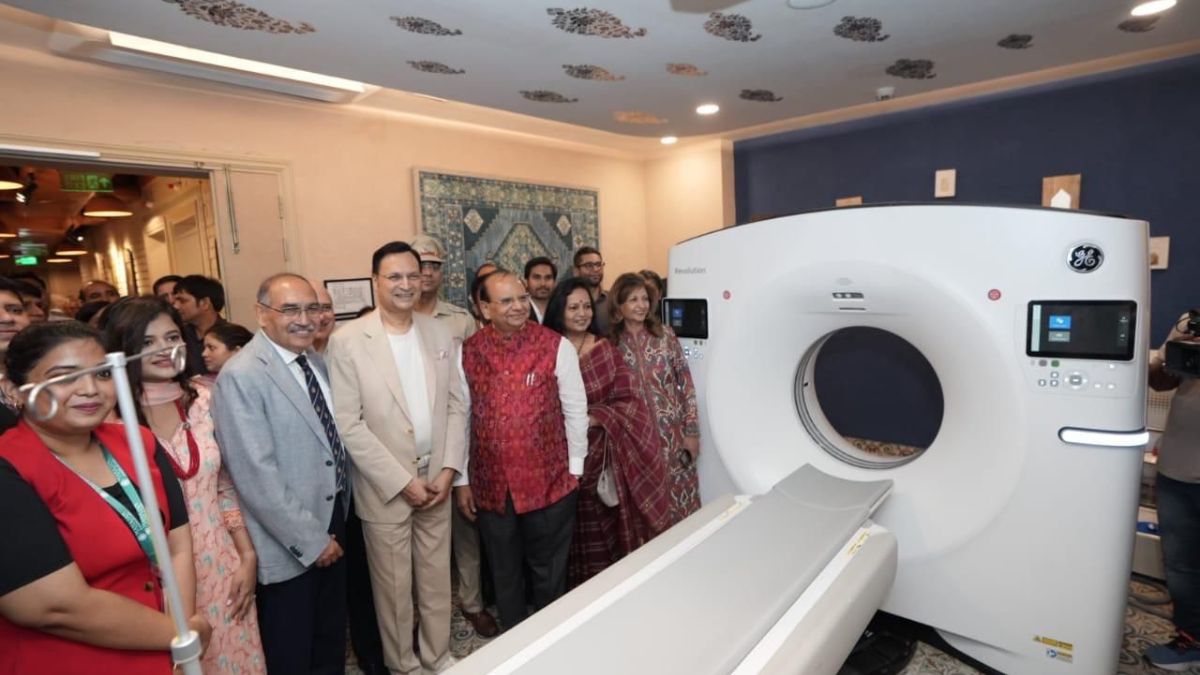With artificial intelligence reshaping industries globally, healthcare in India is now seeing its own AI-driven turning point—this time in the radiology room as Delhi’s Lieutenant Governor Vinai Kumar Saxena inaugurated India’s “first ultra-fast AI-powered MRI scanner”, the Excel 3T at Mahajan Imaging’s new diagnostic centre in Dwarka that will not only offers high-end MRI but integrates advanced laboratory testing and genetic diagnostics.
The Excel 3T MRI system, integrated with artificial intelligence to optimise speed, clarity and patient experience is capable of slashing scan times by nearly half and delivering sharper imaging using AI-based reconstruction and real-time correction algorithms. With specialisation in cardiac, neuro and musculoskeletal imaging, it is positioned to meet growing demand for precision-led diagnostics in urban India, particularly for non-communicable diseases (NCDs).
AI’s growing footprint in diagnostics
The newly installed Excel 3T MRI scanner is powered by artificial intelligence systems that significantly improve imaging resolution while reducing scan time. Cardiac MRI scans, which traditionally took over an hour can now be completed in 30–40 minutes, thanks to real-time motion correction, compressed sensing algorithms and AI-guided image reconstruction. These features not only improve efficiency but also enhance the patient experience, particularly for the elderly, children, and those with claustrophobia.
“AI is no longer a futuristic concept—it’s now a practical clinical tool,” said Dr. Harsh Mahajan, Founder & Chairman of Mahajan Imaging & Labs. “Our goal is to introduce a new model for diagnostics, where cutting-edge AI supports better diagnosis while the patient remains at the centre of care.”
Beyond comfort, the AI-integrated system enhances diagnostic confidence, he said, adding that by reducing artefacts and improving signal-to-noise ratios by up to 50%, the system delivers crisper, more accurate images. “This is particularly crucial in cardiac MRI, where early detection of subtle functional or structural abnormalities can alter treatment outcomes dramatically.
Meeting India’s growing diagnostic burden
India’s health system is under increasing pressure from a rising tide of NCDs. According to the World Health Organisation, 63% of all deaths in India are caused by non-communicable diseases, with 27% due to cardiovascular disease (CVD) alone. Alarmingly, CVD accounts for 45% of deaths among those aged 40 to 69, and Indians experience heart disease nearly a decade earlier than their Western counterparts.
Despite this, access to high-quality diagnostic tools remains unequal. That’s where AI-enhanced systems hold promise. “In high-burden countries like India, where clinical manpower is limited and diagnostic delays are common, AI can support faster image interpretation, automate repetitive tasks and reduce error rates,” said a Delhi-based preventive cardiology expert.
Impact Shorts
More ShortsMoreover, AI’s potential to triage large volumes of data, flag anomalies and assist radiologists in identifying patterns offers a practical solution to India’s stretched healthcare workforce.
A model for the future?
The Delhi government is keen to encourage more public-private partnerships in advanced healthcare. Speaking at the event, Lieutenant Governor Vinai Kumar Saxena said:
“The rise of NCDs, especially cardiac disease, is alarming. We are ensuring that all residents of Delhi have access to affordable diagnostics. I urge more providers to come forward and contribute to this transformation.”
Currently, most AI tools in Indian diagnostics are developed by private vendors and deployed in premium urban centres, leaving public hospitals and rural clinics far behind. For AI’s benefits to be equitably distributed, experts say India needs robust regulatory frameworks, interoperability standards and capacity building among healthcare workers.
Technology with empathy
The Dwarka centre reflects more than just technological advancement. Its patient-centric design includes natural light, calming interiors, and sustainable infrastructure like energy-efficient systems and water reuse mechanisms. Dr. Mahajan emphasised that the goal was to deliver not just clinical precision but emotional comfort—a departure from the cold, clinical atmosphere often associated with diagnostic centres.
“We want to continue to be at the forefront of quality focused Integrated Diagnostics in Delhi NCR and North India. We hope to play a bigger role in preventive health for Non-Communicable Diseases, and will introduce dedicated facilities that marry Genomics, Lab medicine and high- end Radiology,” said Kabir Mahajan, Chief Operating Officer, Mahajan Imaging & Labs.
)